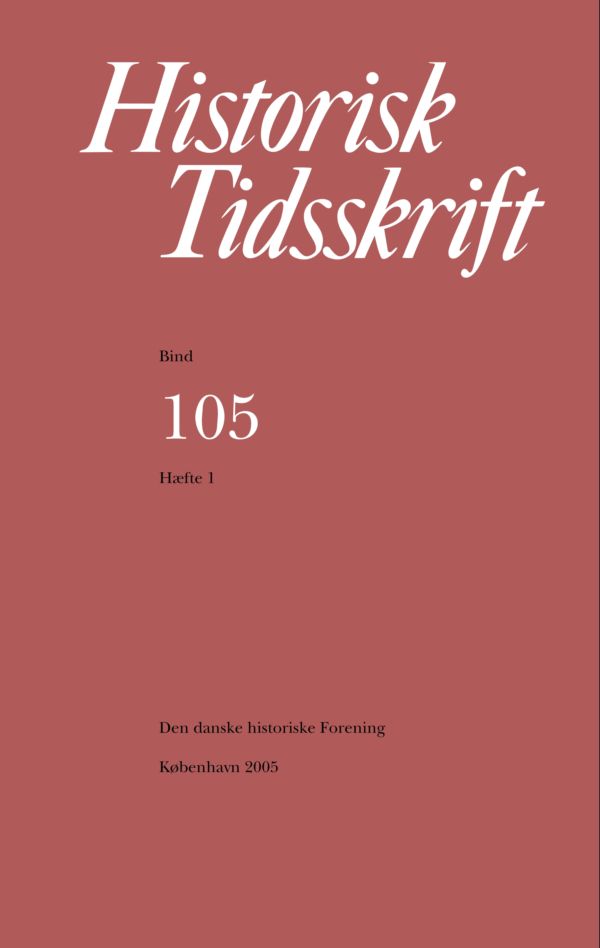Den engelske svedesyge. En analyse af epidemien i Danmark i 1529
Resumé
The English Sweating Sickness in Denmark 1529The English sweating sickness (Sudor Anglicus) an epidemic fever characterized by sudden onset, profuse sweating and often death within 24 hours, struck England for the first time in 1485. There were four subsequent epidemics in 1508, 1517, 1528 and 1551 of which only the epidemic of 1528 spread to the European continent which was hit in 1529. Unlike the plague, the sweating sickness hit the upper ranks of society to the same degree as the general population, which probably is part of the explanation for the rather copious comment in contemporary sources although the total demographic impact of the disease was far less than the effect of plague in the same period. The present article concentrates on the mortality inflicted by the epidemic of 1529 in Denmark and the Duchies of Schleswig and Holstein. A short discussion of the extensive English sources introduces the analysis since the only modern studies of the mortality of the sweating sickness have been performed in England. In 1529 there were no parish registers in Denmark and the Duchies and no registration of testaments except for the greater landowners i.e. contemporary statistical sources do not exsist. In the case of Denmark information of mortality is, therefore, based solely on narrative sources. The only figure on mortality of the sweating sickness in Denmark which is referred to repeatedly is that 400 or 500 people died in Copenhagen in three days which roughly compares to 5 % of the population. The figure seems to originate from a misinterpretation of the Roskilde Yearbook 1449-1549 which is a purely narrative source. In all probalility the mortality figure in the Roskilde Yearbook refers to Antwerpen and not to Copenhagen.Downloads
Publiceret
Citation/Eksport
Nummer
Sektion
Licens
Ophavsret til bidrag i Historisk Tidsskrift tilhører forfatterne og Den danske historiske Forening som udgiver af Historisk Tidsskrift. For illustrationer gælder den ophavsret, som står anført i billedteksten. Ophavsretslovens almindelige bestemmelser gælder, hvilket vil sige, at ophavsretten gælder i 70 år efter forfatterens død. Bidrag i Historisk Tidsskrift må derfor, med forbehold for en ”moving wall” på tre år, frit downloades, læses, gemmes, anvendes og citeres (med kildeangivelse) i privat og videnskabelig sammenhæng, men de må ikke helt eller delvis genudgives af tredjepart, heller ikke i redigeret form, uden tilladelse fra forfatterne og Den danske historiske Forening. Henvendelse skal i så fald rettes til Historisk Tidsskrifts redaktion på histtid@hum.ku.dk.





